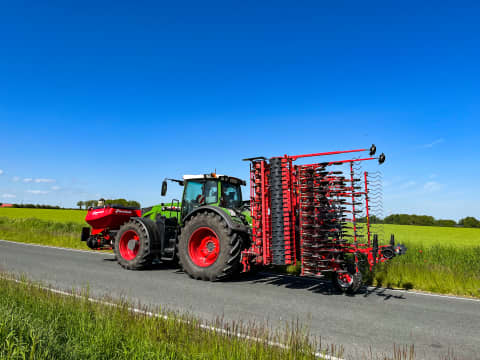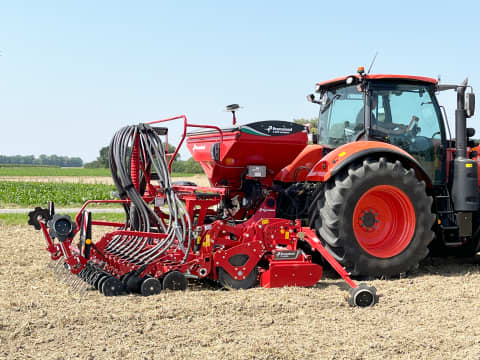“The 3300S is as good on the road as it is in the field, thanks to its trailer-towing headstock,” explains Thomas Smith, who farms with his dad Iain, brother Graeme and son Cameron. “It’s just like the i-Plough when in transport – safe and secure, with no risk of over-hang when turning into gateways.”
Around 1,800 acres are ploughed and pressed each year by the two ploughs, as the farm manages tightening weather windows to get its seedbeds prepared. Typical furrow widths are 16in, and working depths are from 9-11in.
Martin Mearns (pictured, far right), who operates the 3300S, favours the revised leg profile, which has seen a reduction in blockages.
“The curved shape of the leg stops a build-up of trash when the going turns wet,” says Martin. “It’s a big improvement on the older plough leg designs, and is the same as the i-Plough. The 3300S is also a better plough on the trip mechanism – auto reset just seems to work more smoothly.”
In terms of plough specification, he says the 3300S’ hydraulic depth wheel is a great addition, and should be on any purchaser’s wish-list.
“If you happen to be near a deep tramline for example, all it takes is a tug of the spool valve to help carry the plough,” he says. “This creates a more consistent and even finish for the drill, rather than the plough dropping in deeper where there’s a rut. And it’s a really handy feature to have when ploughing headlands.”
“Having the convenience of the Packomat press makes the 3300S the best all-rounder for the wide variety of soils we encounter,” says Martin. “And with number 28 mouldboards, it’ll take some beating.”




